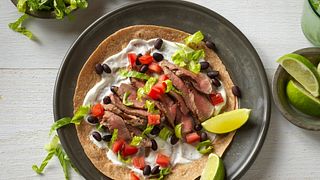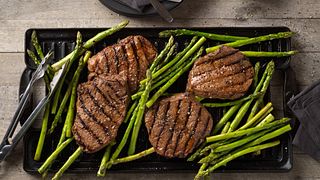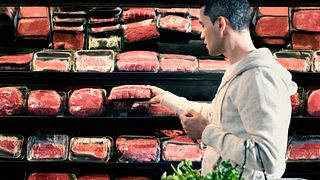Delivering Dinner: Online Meal Ordering
July 6, 2020
The COVID-19 pandemic has led to a dramatic increase in online meal ordering, just like it has changed consumer behavior in online grocery. In fact, currently 86% of consumers are ordering meals online. While many traditional options for online meal ordering, such as Chinese takeout and pizza have long been mainstream, third party ordering and delivery services have recently expanded the market. With more consumers cooking and dining at home, foodservice operators have quickly adopted this strategy or even started implementing their own infrastructure for online ordering and meal delivery to remain competitive.
As a result, the National Cattlemen’s Beef Association, a contractor to the Beef Checkoff, sought to understand more about this market by conducting an online survey with 800 respondents. The research looked at who orders meals online, what their motivations and barriers are for doing so, and what kind of food—including beef meals—they purchase or prefer most and why.
Currently, 40% of consumers are ordering at least one meal online a week. 16% just started doing so, while 53% have increased this behavior through the COVID-19 environment. The current climate is certainly driving some consumers to order online, with the top reason for doing so being COVID-19 and another reason being to avoid crowds, obviously related to the pandemic. Across the total, 73% plan to continue or increase this behavior in the future. More specifically, while some order for pick-up, more are using a delivery option. Those who are ordering meals online more frequently tend to live in urban locations, have a higher income, and fall in the age range of 25-34. Unsurprisingly, most are typically ordering the meals for pick-up or delivery to their home; however, just as many consumers also place orders at a friend or family member’s home as they do work.
Through the current environment has led to more consumers ordering meals online, the time it saves, and its growing availability will keep consumers coming back. Specifically, half of consumers have used third-party apps such as Grubhub, UberEats,DoorDash, and Postmates, while 37% of consumers have ordered online and picked up at the restaurant and 28% have had the actual restaurant deliver. With all these options, results from the research showed the top three protein categories consumers purchase most are beef burgers, chicken sandwiches, and Mexican beef meals.
There are barriers to online ordering. In comparison to other ecommerce platforms, the online meal space has more challenges in terms of usability of platforms for their online shopping experience. Some consumers cite issues with having to download and navigate an app—when sometimes it’s just easier to call. Additionally, the costs associated with a delivery option does deter some, with 34% stating they don’t want to pay delivery fees. Reducing or providing free delivery or offering a guarantee attached to the cost of delivery could help offset pricing concerns.
Specific to beef, faster delivery and having a satisfaction guarantee is most appealing to incentivize more consumers to order. More importantly, the food arriving warm and with the right degree of doneness is critical for beef meals. As some consumers note:
"I eat my beef very well done. Many times, when I am out, I have to send it back to the kitchen to have it cooked a little more. You can’t do this with delivery."
"Beef is a tricky one to get delivered. I think steak and beef is better when you eat it right away. It could be a full hour from the time it finished cooking to when it was delivered."
As a result, the degree of doneness, meal temperature, and having more information about the meal in general is even more important to consumers when it comes to beef, and consumers would like to see or customize more of these aspects. Establishing a guarantee on the delivery timeframe would help alleviate concerns over delivery timing and the risk of meals going cold or being poor quality. Overall, their lack of trust is a big barrier, putting the responsibility on the delivery service and the restaurant to ensure warm and accurate orders are delivered on time—partnering together on strategies could give efforts to do so more of an impact.
This doesn’t mean consumers currently ordering beef aren’t satisfied with their experience. Most are pleased with the beef meals they’ve ordered, including steak and roast beef. The main aspects of the taste, temperature, and timely delivery of the food all play into a satisfactory beef meal ordered online. In the end, a lack of trust in the online meal ordering experience, especially delivery, is a challenge foodservice operators should work to solve, but the fact that many consumers are already satisfied with their delivered beef meals bodes well for the future of this space and beef.







